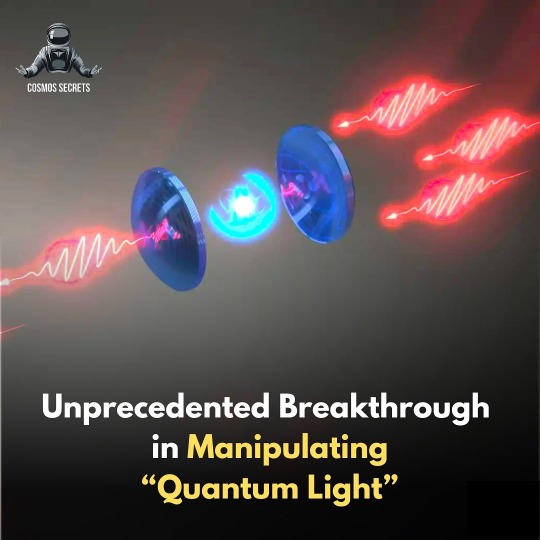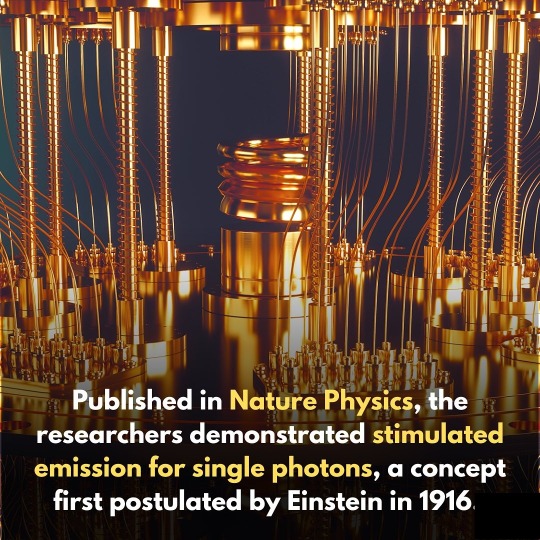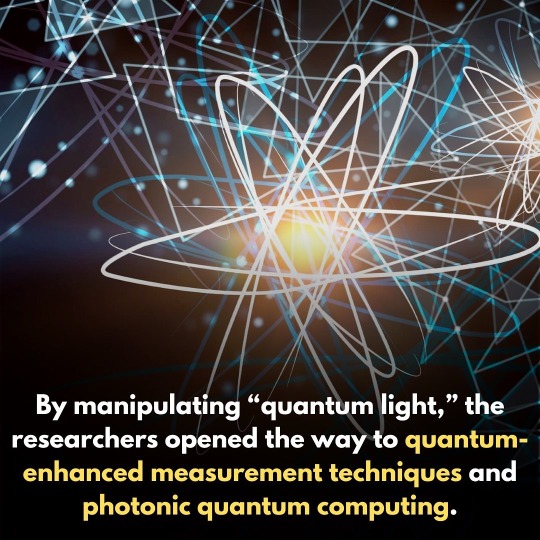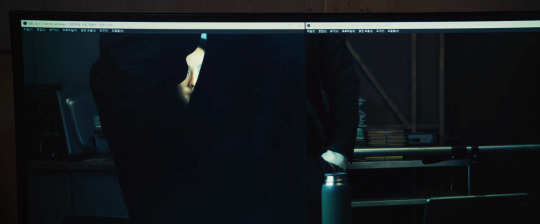#photons
Text
Scientists now know that this remarkable reaction requires the smallest possible amount of light – just one single photon – to begin.
A US team of researchers in quantum optics and biology showed that a lone photon can start photosynthesis in the purple bacterium Rhodobacter sphaeroides, and they are confident it works in plants and algae since all photosynthetic organisms share an evolutionary ancestor and similar processes.
The team says their findings bolster our knowledge of photosynthesis and will lead to a better understanding of the intersection of quantum physics in a wide range of complex biological, chemical, and physical systems, including renewable fuels.
"A huge amount of work, theoretically and experimentally, has been done around the world trying to understand what happens after a photon is absorbed," says Graham Fleming, a biochemist at the University of California, Berkeley.
"But we realized that nobody was talking about the first step. That was still a question that needed to be answered in detail."
Continue Reading
224 notes
·
View notes
Photo

The Universe Is Not Locally Real, and the Physics Nobel Prize Winners Proved It
Elegant experiments with entangled light have laid bare a profound mystery at the heart of reality
One of the more unsettling discoveries in the past half century is that the universe is not locally real.
“Real,” meaning that objects have definite properties independent of observation—an apple can be red even when no one is looking;
“Local” means objects can only be influenced by their surroundings, and that any influence cannot travel faster than light.
Investigations at the frontiers of quantum physics have found that these things cannot both be true. Instead, the evidence shows objects are not influenced solely by their surroundings and they may also lack definite properties prior to measurement. As Albert Einstein famously bemoaned to a friend, “Do you really believe the moon is not there when you are not looking at it?”
This is, of course, deeply contrary to our everyday experiences. To paraphrase Douglas Adams, the demise of local realism has made a lot of people very angry and been widely regarded as a bad move.
Blame for this achievement has now been laid squarely on the shoulders of three physicists: John Clauser, Alain Aspect and Anton Zeilinger. They equally split the 2022 Nobel Prize in Physics “for experiments with entangled photons, establishing the violation of Bell inequalities and pioneering quantum information science.” (“Bell inequalities” refers to the pioneering work of the Northern Irish physicist John Stewart Bell, who laid the foundations for this year’s Physics Nobel in the early 1960s.)
Colleagues agreed that the trio had it coming, deserving this reckoning for overthrowing reality as we know it. “It is fantastic news. It was long overdue,” says Sandu Popescu, a quantum physicist at the University of Bristol. “Without any doubt, the prize is well-deserved...”
Read more: https://www.scientificamerican.com/article/the-universe-is-not-locally-real-and-the-physics-nobel-prize-winners-proved-it
#physics#science#quantum mechanics#quantum theory#entanglement#particle physics#photons#bell inequalities#the real#cosmology#the universe#philosophy#quantum entanglement
624 notes
·
View notes
Text

#okay done with this now#lightray#solis#new gods#fourth world#epsilon#tezuka#testuwan atom#astro boy#pluto#naoki urasawa pluto#pluto anime#photonic energy#photons
92 notes
·
View notes
Text








" For the first time, scientists at the University of Sydney and the University of Basel in Switzerland have demonstrated the ability to manipulate and identify small numbers of interacting photons – packets of light energy – with high correlation.
This unprecedented achievement represents an important landmark in the development of quantum technologies. Details of the research were published on March 20 in the journal Nature Physics.
“Photon bound state dynamics from a single artificial atom” by Natasha Tomm, Sahand Mahmoodian, Nadia O. Antoniadis, Rüdiger Schott, Sascha R. Valentin, Andreas D. Wieck, Arne Ludwig, Alisa Javadi and Richard J. Warburton, 20 March 2023, Nature Physics. "
//© Secrets Of the Cosmos
#space#Science#Knowledge#Physics#Quantum Physics#Photons#Protons#Atom#aesthetics#explore#follow#discover
58 notes
·
View notes
Text








헤어질 결심 (Decision to Leave | Park Chan-Wook | 2022)
6 notes
·
View notes
Text

The path to a quantum network: Erbium dopants stimulated to emit single photons
Researchers at MPQ in Garching, together with a team from TU Munich, have excited erbium atoms embedded in crystalline silicon such that they emit single photons. Their special properties can form the basis for the development of extended networks that link quantum systems with each other, all the way to a future quantum internet.
This would allow for information to be exchanged via fiber-optic networks with provable privacy and security. The novel system used by the researchers offers key advantages in the production of network nodes, their cooling and the range of data transmission.
The controlled use of quantum physical phenomena such as the entanglement of several particles enables completely new technical applications—for example, the construction of highly sensitive quantum sensors and fast quantum computers. With these, certain tasks that are unsolvable for conventional computing machines can be accomplished in a short time.
Read more.
23 notes
·
View notes
Text
Magic is just electromagnetic radiation that propagates perpendicular to the current known spectrum. Physicists prefer to call it "complex radiation," because they hate whimsy. Where's my Nobel Prize?
61 notes
·
View notes
Text

“To my dearest and sweetest Sugarplum!”
#alvin seville#alvinnn and the chipmunks#alvin and the chipmunks#alvin 2.0#alternate universe#valentines gifts#valentines day#Valentines card#physics#photons#energy#corny#but funny#alvinette#jeanette miller#i love jeanette so much
2 notes
·
View notes
Text
"Walking home at night, I shine my flashlight up at the sky. I send billions of ... photons toward space. What is their destination? A tiny fraction will be absorbed by the air. An even smaller fraction will be intercepted by the surface of planets and stars. The vast majority ... will plod on forever. After some thousands of years they will leave our galaxy; after some millions of years they will leave our supercluster. They will wander through an even emptier, even colder realm. The universe is transparent in the direction of the future."
—Hubert Reeves, "Atoms of silence"
113 notes
·
View notes
Text
Combined with water, lye heats to over two hundred degrees, and as it heats it burns into the back of my hand, and Tyler places his fingers of one hand over my fingers, our hands spread on the lap of my bloodstained pants, and Tyler says to pay attention because this is the greatest moment of my life. "Because everything up to now is a story,” Tyler says, "and everything after now is a story.” This is the greatest moment of our life. The lye clinging in the exact shape of Tyler’s kiss is a bonfire or a branding iron or an atomic pile meltdown on my hand at the end of a long, long road I picture miles away from me. Tyler tells me to come back and be with him. My hand is leaving, tiny and on the horizon at the end of the road. Picture the fire still burning, except now it’s beyond the horizon. A sunset.
"Come back to the pain,” Tyler says.
Chuck Palahniuk Fight Club
#reminds me i got this in my drafts#chuck calling this his take on the great gatsby 🤪#fight club#chuck palahniuk#bloodsport#photons#arson
12 notes
·
View notes
Text
What causes mirages?
#11 in Physics and Astronomy, 18/11/2023
Many of us may not have ever seen a mirage in person. The only experience some of us will have is witnessing the cliche moment in movies wherein our thirsting, dying hero will spot a beautiful oasis, which disintegrates right before they jump in. Truly tragic.
In the midst of a brief stroll along the physics floor of my school to clear my mind from frustrating applied mathematics questions, a neatly-arranged stack of Physics Today magazines caught my eye. The particular issue I picked up, which looked at black holes, also had a section on “green flashes”, and the topic I’m about to discuss, the science of mirages.
People can see mirages along a highway on a hot day quite easily. In case you’re struggling to visualise it, the following image is a good example!

This phenomenon is caused by refraction of light. As light passes between mediums, it bends; whether or not it turns towards or away from the normal depends on if it going into a more dense material, or the reverse. You may know that light travels its fastest in a vacuum, since there’s no matter slowing it down.
Mirages occur when there’s a rapid change in the density of the atmosphere. This commonly occurs on summer days; a road, which absolutely bakes in the sun, will heat the air right above it as a result. This creates a difference in the air density. As light passes between those two levels, it bends, creating false images.
There are two types of mirages, named “inferior” and “superior.” These names are unusually grand for their meaning; it simply refers to the fact that some mirages form below the original object, and some mirages form above the horizon. What differentiates these two is the order of the air density.
Superior mirages form when there is cooler air below a warmer level of air. This occurs mainly in icy landscapes or over very cold water, meaning that you’ll see an image much higher than it actually should be. You could see a land mass floating in the air, which obviously isn’t realistic. Inferior mirages are just the opposite.
That said, classifying mirages as optical illusions is incorrect. You’re still seeing a real object, and it can even be photographed (how else would I have that photo?). So, the next time you see a mirage, think to yourself, is it inferior or superior? What effect caused it? What actually are my eyes seeing?
***
#studyblr#physics#stem#alevels#sixth form#gcse#engineering#astronomy#astrophysics#mirages#light#photons
3 notes
·
View notes
Text
Since the 17th century, when Isaac Newton and Christiaan Huygens first debated the nature of light, scientists have been puzzling over whether light is best viewed as a wave or a particle—or perhaps, at the quantum level, even both at once. Now, researchers at Stevens Institute of Technology have revealed a new connection between the two perspectives, using a 350-year-old mechanical theorem—ordinarily used to describe the movement of large, physical objects like pendulums and planets—to explain some of the most complex behaviors of light waves.
The work, led by Xiaofeng Qian, assistant professor of physics at Stevens and reported in the August 17 online issue of Physical Review Research, also proves for the first time that a light wave's degree of non-quantum entanglement exists in a direct and complementary relationship with its degree of polarization. As one rises, the other falls, enabling the level of entanglement to be inferred directly from the level of polarization, and vice versa. This means that hard-to-measure optical properties such as amplitudes, phases and correlations—perhaps even these of quantum wave systems—can be deduced from something a lot easier to measure: light intensity.
Continue Reading.
99 notes
·
View notes
Text

Somehow it knows when you’re watching.
9 notes
·
View notes
Photo




“Complex vector light fields have become a topic of late due to their exotic features, such as their non-homogeneous transverse polarisation distributions and the non-separable coupling between their spatial and polarisation degrees of freedom (DoF). In general, vector beams propagate in free space along straight lines, being the Airy-vector vortex beams the only known exception. Here, we introduce a new family of vector beams that exhibit novel properties that have not been observed before, such as their ability to freely accelerate along parabolic trajectories. In addition, their transverse polarisation distribution only contains polarisation states oriented at exactly the same angle but with different ellipticity. We anticipate that these novel vector beams might not only find applications in fields such as optical manipulation, microscopy or laser material processing but also extend to others.”
—Parabolic-accelerating vector waves, https://www.researchgate.net/publication/354011186_Parabolic-accelerating_vector_waves
Bo Zhao, Valeria Rodríguez-Fajardo at Colgate University, Xiaobo Hu at Harbin University of Science and Technology, Raul Hernandez-Aranda at Tecnológico de Monterrey, Benjamin Perez-Garcia at Tecnológico de Monterrey, Carmelo Rosales-Guzmán at Centro de Investigaciones en Optica
#science#scientific diagram#waves#scalar waves#vector waves#photonics#nanophotonics#quote#light#photons
44 notes
·
View notes








